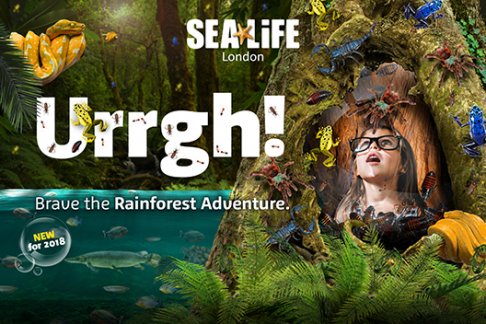Gratis
Apoyo

Included: Live English speaking guide Walking Tour Personal Audio Headset Excluded: Travel Card Pick up and Drop off at your Hotel
Meet Your Host - Steve Cummins: Steve is an author, stand up comedian, radio host and headliner in every major comedy club in Ireland. He is currently the resident host of The Laughter Lounge, Ireland’s largest and most prestigious comedy club. He has performed comedy on the BBC, RTE and Channel 4. He has also acted on TG4. He has written for three major television projects and created, wrote and presented the comedy panel show “What Were We Thinking?” for the national broadcaster 2FM and hosted his own show, On Demand with Steve Cummins on All 80s Radio.A natural performer and people person Steve brings a warmth and professionalism to this unique Dublin City Sightseeing tour, only from Hidden Dublin Tours.
Everyone remembers where they were on September 11, 2001. An event that shook the world, the terrorist attacks on the World Trade Center changed the path of recent history in a way we still see every day. Visit Ground Zero to gain a deeper understanding of 9/11, the affect it had on the city (and the world!) and the long struggle undergone in New York City to move forward from that day. With an expert local guide, you’ll explore not just the 9/11 Memorial & Museum, but the areas and landmarks around the World Trade Center that featured so poignantly in news reports after the attacks. Traveling in small groups, you’ll visit St. Paul’s Chapel, where friends and families gathered to hear news of their loved ones, and where handmade prayers and memorials still lie. At Brookfield Place (previously known as the World Financial Center) you’ll learn about the economic effects of the attack and the struggle to rebuild afterwards. You’ll visit the Eleven Tears Memorial, a touching and personal memorial, which commemorates the 11 American Express employees that died in 9/11. The Winter Garden is another must-see on Vesey Street. You may have missed it on your own, but with a local guide leading the way, you won’t miss a beat. After that we’ll head for Ground Zero, to see the stunning 9/11 Memorial Pools, each one built in the footprint of one of the twin towers, and inscribed with the names of all those who perished in the attack. Your guide will take this time to give you a more personal account of the tragedy that unfolded here, taking you to the Fireman’s Memorial and the Survivor Tree to tell you the incredible stories of courage and loss that unfolded right where you stand. The last stop on our tour is one we’ll let you manage on your own. The 9/11 Museum is a very well curated space, with artifacts salvaged from the event on display, alongside countless personal stories. It’s a very moving visit, best taken in at your own pace in silence. We still have one last perk though – we’ve pre-reserved your museum tickets, so you’ll skip long lines to gain immediate access. We’ve kept our groups small for this tour to ensure a level of intimacy and peace that’s fitting for such a visit, and have chosen only the best local guides to give your tour a more personal feel, giving the 9/11 Memorial and its surrounds a more human context. PLEASE NOTE: From March 1, 2018, we are no longer including the following sites on our walking tour due to a slight itinerary change. American Express Eleven Tears Winter Gardens Brookfield Place Inclusions: Expert local tour guide 5pm Reserved timed-entry 9/11 Museum tickets (self-guided) Small groups of 20 people or fewer Exclusions: Gratuities Hotel pick-up/drop-off Food/Beverages Sites Visited: St Paul's Chapel Brookfield Place (formerly known as World Financial Center) American Express Eleven Tears Memorial Winter Garden 9/11 Memorial Museum (Museum is non-guided) 9/11 Memorial Pools Freedom Tower (from exterior) Fireman's Memorial Survivor Tree North Cove Marina PLEASE NOTE: From March 1, 2018, we are no longer including the following sites on our walking tour due to a slight itinerary change. American Express Eleven Tears Winter Gardens Brookfield Place Please note, this tour is in English only.
En este paseo en barco podrá ver:
Ramore Head
Skerries
Portballintrae
Castillo de Dunluce
White Ricjs
Isla Doo
Portrush Este
Bahías del Oeste
Duración: 1 hora
Create a London sightseeing schedule to suit you! This Hop-On Hop-Off open top bus tour includes 91 stops across London that you can jump off at and explore the city. On-board commentary gives you a few details about the attractions you can pass on the route - these include Buckingham Palace, the Tower of London and St Paul's Cathedral!
EXEMPTIONS The following groups are eligible for free access to the Grands Appartements tour, on presentation of the relevant ID : - under 18s ; - long-term EU residents of any nationality, aged 18 to 25 ; - registered disabled persons or war veterans (plus personal assistant) ; - those receiving minimum pension payments, single parent benefit, unemployment allowance or similar welfare payments ; - Pass Education holders ; - university and art school students ; - public museum conservation and research staff, Ministry of Culture and INHA (Institut national d’histoire de l’art) staff ; - journalists with a valid press pass ; - conference speakers and tour guides ; - ICOM and ICOMOS members ; - bus drivers accompanying groups ; - school tour guides/assistants (limited to one per seven students) - members of the Société des amis et mécènes du château de Fontainebleau (SAMCF).
